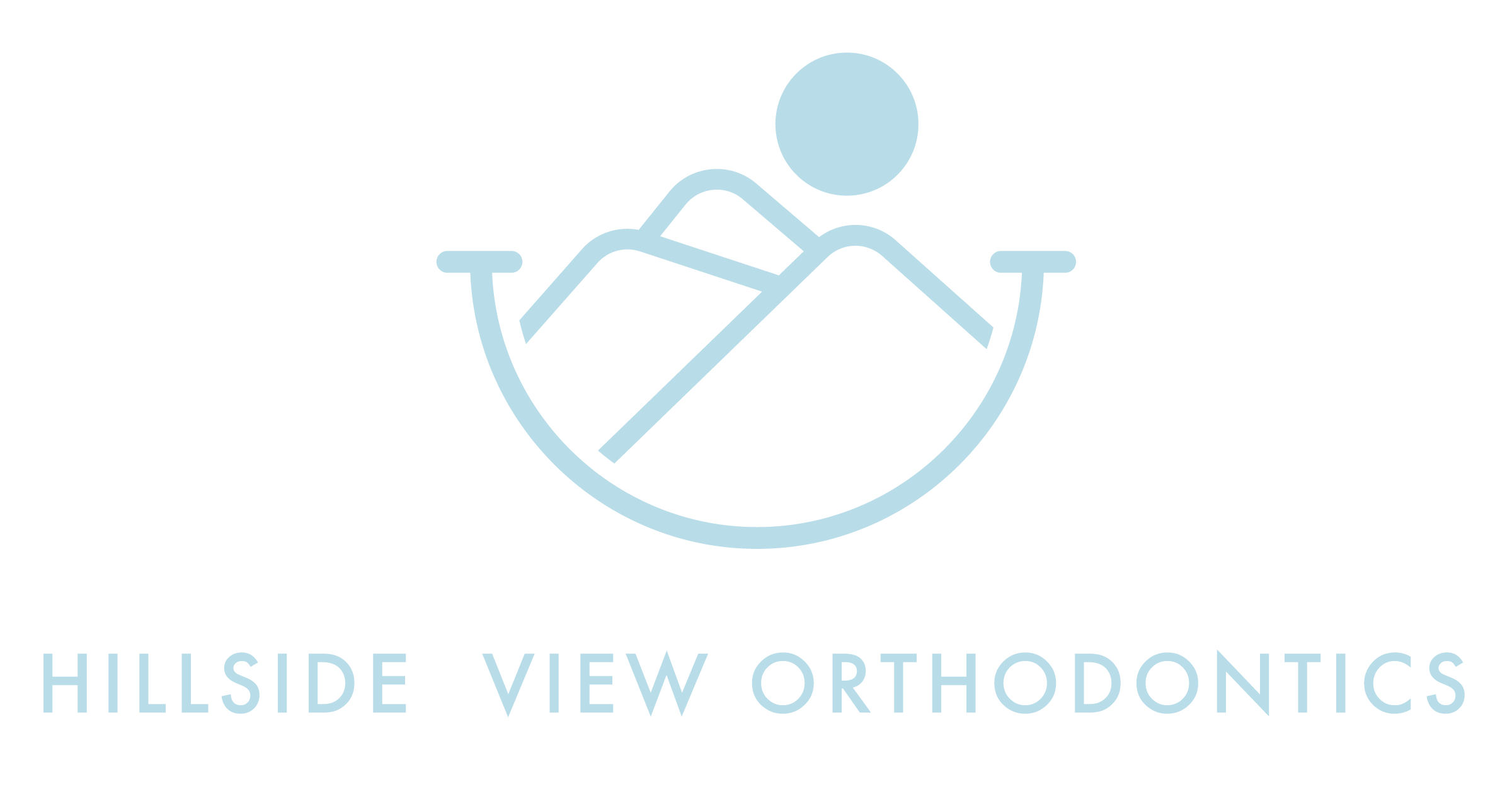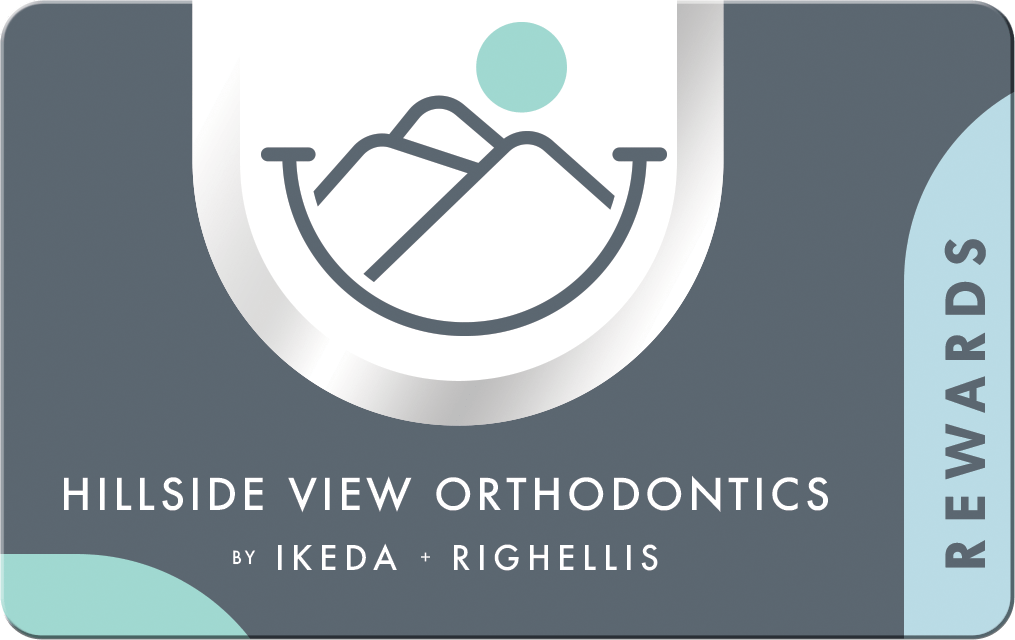OUR SERVICES
At Hillside View Orthodontics, we treat every patient as if they are our own family.
Drs. Ikeda and Righellis take pride in our detail-oriented diagnostic process that carefully evaluates each patient’s facial balance, bite function, airway, jaw growth, and jaw joint health. We are committed to providing the highest quality of care for our patients with an individualized treatment plan—because everyone is unique. It’s our privilege and greatest joy to serve the community and offer an efficient, comfortable experience during your journey to get the smile you’ve always wanted.
Orthodontics focuses on the way the teeth and jaws fit together and how all the parts of the smile, face, and chewing mechanism work together smoothly. The reality is that orthodontics done right is so much more than just straight teeth. If you are considering orthodontic treatment for yourself or a family member, schedule a consultation today at Hillside View Orthodontics. Dr. Ikeda and her highly qualified team will help you make a well-informed decision for your orthodontic needs, moving you one step closer to a stunning and healthy smile!
Our Services
-
Children’s Orthodontics
-
Teen Orthodontics
-
Adult Orthodontics
-
Jaw Surgery
-
TMJ Management/ Growth
-
Airway Analysis
-
Accelerated Treatment
Children's Orthodontics
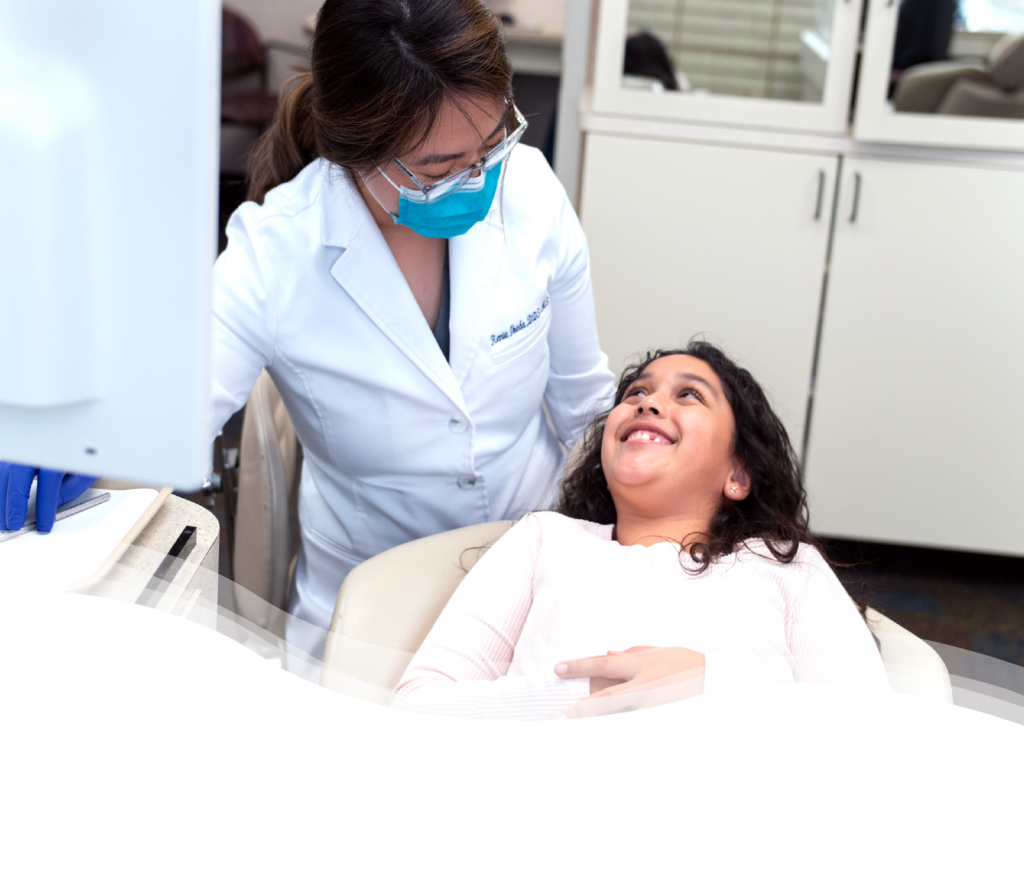 Typically, permanent teeth begin to erupt around age six or seven. For this reason, the American Association of Orthodontists recommends that all children receive an orthodontic screening by age seven. Any orthodontic issues or skeletal discrepancies usually become apparent around this age. Early interceptive treatment, also known as Phase 1 treatment, can begin even if your child has not yet lost all of their baby teeth.
Typically, permanent teeth begin to erupt around age six or seven. For this reason, the American Association of Orthodontists recommends that all children receive an orthodontic screening by age seven. Any orthodontic issues or skeletal discrepancies usually become apparent around this age. Early interceptive treatment, also known as Phase 1 treatment, can begin even if your child has not yet lost all of their baby teeth.
Phase 1 treatment can be in a patient’s best interest if their orthodontic problem is one that could become more serious and increasingly difficult to correct over time when left untreated.
Some of the problems to watch out for in children who are still growing and developing include:
- Mouth breathing
- Obstructed airway/Excessive snoring
- Thumb/Finger sucking
- Abnormal tongue position/function
- Constricted palate
- Jaws that are too far back or forward
- Protruding teeth
- Biting into the roof of the mouth
- Upper and lower teeth that do not meet at all or meet in an abnormal way
- Crowded teeth
- Early or late loss of baby teeth
The goal is to identify and intercept the developing orthodontic problem, guide the growth of facial bones, and provide a favorable condition for incoming permanent teeth. More treatment options are available while the jaw bones are still growing, and early treatment can significantly simplify the process of straightening the teeth and aligning the bite in the future.
It is important to remember that there will always be a chance that a second course of treatment (known as Phase 2 treatment) is needed after all permanent teeth have come in so that each individual permanent tooth can be ideally positioned for aesthetics and function. Early intervention doesn’t guarantee that all of your child’s orthodontic issues will be solved during that time, but it can keep more serious problems from developing or ensure that treatment at a later age is shorter and less complicated.
Early diagnosis and treatment, if necessary, can make all the difference in your child’s health and well-being. After the initial examination, we may suggest you hold off on treatment for a few years or recommend beginning treatment right away. The decision to begin orthodontic treatment may be overwhelming, especially for your young children, but the Hillside View Orthodontics team is here to guide you through every step towards improving your child’s oral health.
Teen Orthodontics
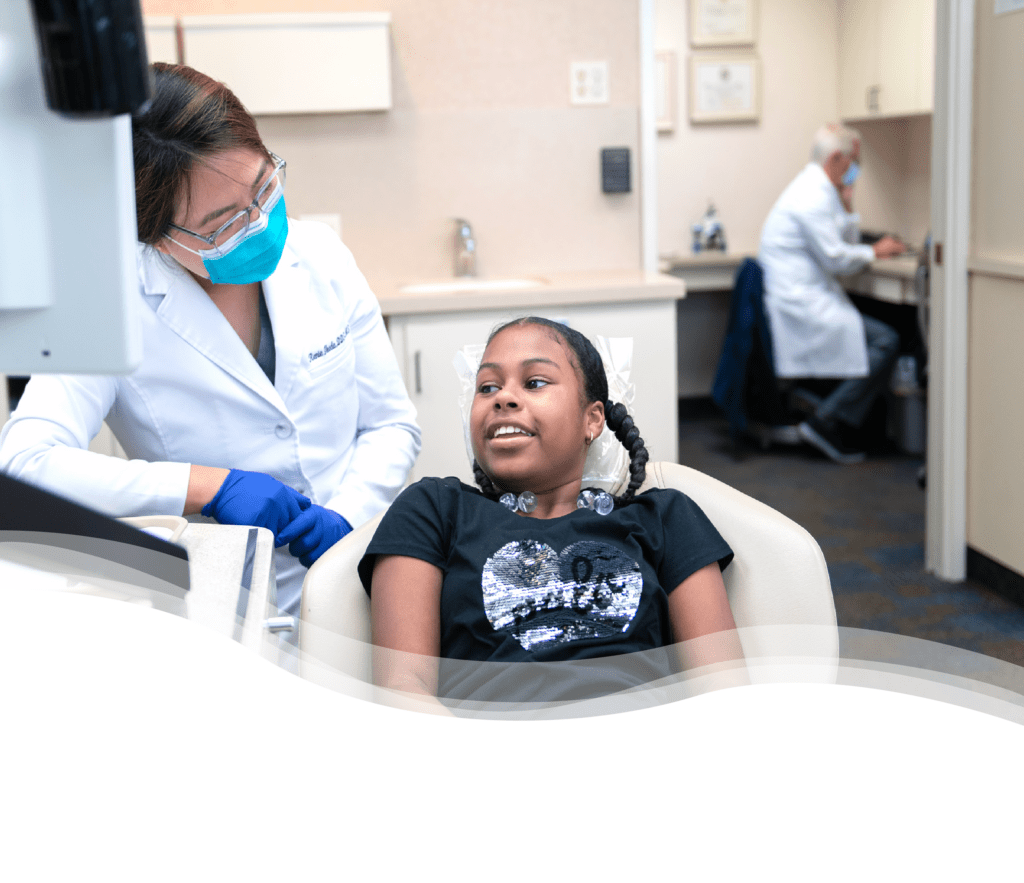 Adolescence is a great time for orthodontic treatment to carefully position each individual permanent tooth to establish a functional bite that is not only aesthetic, but long-lasting. During the teenage years, the facial bones are still developing. Although to a lesser degree than our younger patient population, your teen’s growth makes it feasible to treat a variety of bite problems. Once those bones stop developing, orthodontic issues can become more difficult and costly to treat.
Adolescence is a great time for orthodontic treatment to carefully position each individual permanent tooth to establish a functional bite that is not only aesthetic, but long-lasting. During the teenage years, the facial bones are still developing. Although to a lesser degree than our younger patient population, your teen’s growth makes it feasible to treat a variety of bite problems. Once those bones stop developing, orthodontic issues can become more difficult and costly to treat.
In fact, orthodontic issues will often worsen over time and become more challenging to correct. As the body prepares for adulthood, we can use this time to adjust the teeth and jaw for oral health, airway functionality, or aesthetic reasons. At Hillside View Orthodontics, we believe it’s important to treat the issue your teen is experiencing before they become painful or affect their self-esteem.
We use the latest and most advanced technology and a variety of treatment options to create the perfect smile.
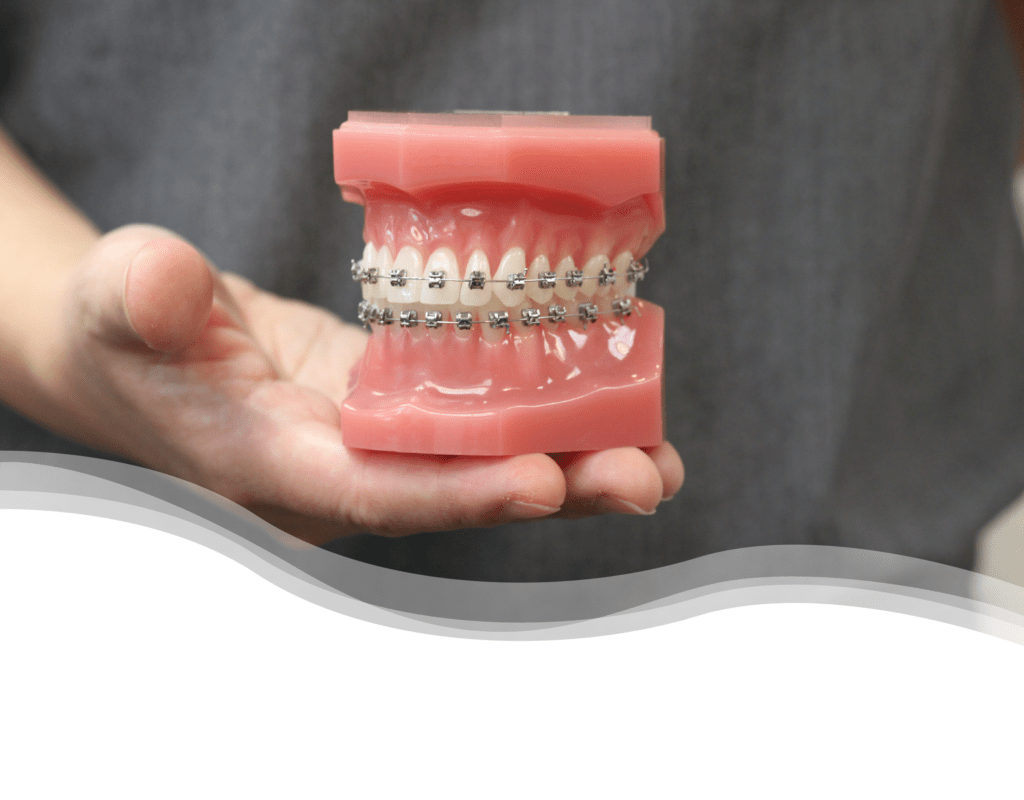 Metal Braces
Metal Braces
Braces are very effective at treating most orthodontic conditions and are very common among teenagers. Metal braces are often the fastest and most predictable way of moving teeth and offer a reliable, effective, and financially economical treatment option. We use self-ligating braces that have less friction between the wire and the brackets, resulting in greater treatment efficiency compared to traditional braces. We offer ultra-low profile metal brackets with matte finish that make them more discreet and comfortable.
 Ceramic Braces
Ceramic Braces
This option allows the braces to blend in more naturally with the color of the teeth, making them far less noticeable. The brackets are made from a ceramic material that is similar in color and texture to our teeth. However, these brackets can stain if your teenager is not diligent with their brushing and flossing. Ceramic braces are more expensive than the metal option and tend to be somewhat bulkier than their metal counterpart due to the manufacturing process to prevent chipping. The ceramic braces are the superior choice for their esthetic appearance, but may not be as comfortable as the metal braces.
 Clear aligners
Clear aligners
We offer Invisalign as an alternative to braces for our teenage patients who are good candidates. Invisalign uses a 3D image of your teenager’s mouth to fabricate a sequence of clear, removable thermoplastic aligner trays. These aligners must be worn 20-22 hours a day for them to be effective, which can be a big challenge for our teenage patients (and even for many adults!). Invisalign does make brushing and flossing easier while in treatment, but because of their removable nature, they can be lost or broken, resulting in costly replacements. While more comfortable, they are also more expensive than braces. Technology with clear aligner therapy is constantly advancing, but Invisalign is not best suited for certain orthodontic conditions. If your child is interested in Invisalign, ask Dr. Ikeda if they are a good candidate.
Adult Orthodontics
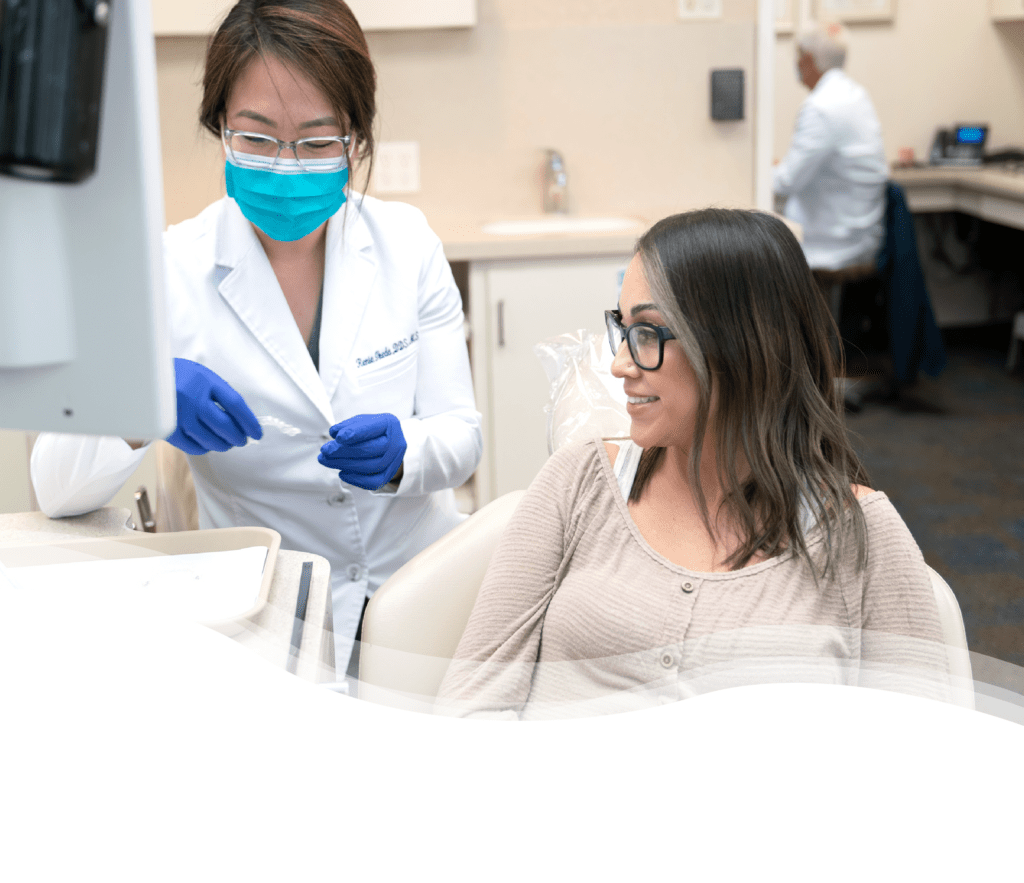 Braces are no longer just for teens. It is never too late to wear braces or explore other orthodontic treatment options to achieve the smile of your dreams. In fact. American Association of Orthodontists states that one in four orthodontic patients is an adult. The practice of orthodontics has continued to evolve, combining advances in technologies and treatments with better materials to make orthodontic procedures more comfortable and accessible for individuals of all ages.
Braces are no longer just for teens. It is never too late to wear braces or explore other orthodontic treatment options to achieve the smile of your dreams. In fact. American Association of Orthodontists states that one in four orthodontic patients is an adult. The practice of orthodontics has continued to evolve, combining advances in technologies and treatments with better materials to make orthodontic procedures more comfortable and accessible for individuals of all ages.
An attractive smile can do wonders for your self-esteem and confidence. A great smile can help you make an excellent first impression and improve your professional achievements. Orthodontic treatment creates a better bite and tooth alignment, and can decrease the risk of future dental problems.
Is orthodontic treatment different for adults? Yes and no. Braces can provide the same benefits no matter the age, but treatment can take longer for adults than for children. The reason for this is that an adult’s facial bones have developed and hardened years before treatment. Because the jaw bone, teeth, and gums are now fully developed, treatment to correct your orthodontic issues may be more challenging to correct, but Dr. Ikeda and her team are experienced in solving these concerns while achieving ideal outcomes and happy smiles.
We have several orthodontic treatment options for you to consider.
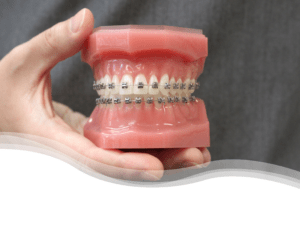 Metal Braces
Metal Braces
Braces are very effective at treating most orthodontic conditions and are often the fastest and most predictable way of moving teeth. We use self-ligating braces that have less friction between the wire and the brackets, resulting in greater treatment efficiency compared to traditional braces. Combining these brackets with heat-activated archwires that respond to your body heat, treatment time is shorter and less painful than what people experienced in the past with traditional metal braces. The stigma associated with metal braces is a thing of the past. Modern brackets are now smaller and less noticeable. We offer ultra-low profile metal brackets with matte finish that make them more discreet and comfortable.
 Ceramic Braces
Ceramic Braces
This option allows the braces to blend in more naturally with the color of your teeth, making them far less noticeable. The clear brackets are made from a ceramic material that is similar in color and texture to our teeth. However, these brackets can stain with certain foods/drinks or when the patient is not diligent with their brushing and flossing. Due to the type of material used and the manufacturing process, ceramic braces are more expensive than the metal option and tend to be somewhat bulkier than their metal counterpart to prevent chipping. The ceramic braces are clearly the superior choice for the esthetic appearance, but may not be as comfortable as the metal braces.
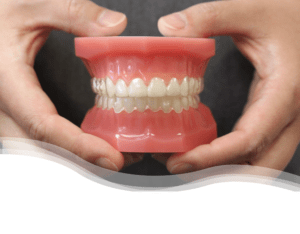 Clear Aligners
Clear Aligners
We offer Invisalign as an alternative to braces for those that are a good candidate. Invisalign uses a 3D image of your mouth to fabricate a sequence of clear, removable thermoplastic aligner trays. Many of our patients who choose Invisalign over braces do so because of the minimal daily interference and the convenience they offer. These aligners must be worn 20-22 hours a day for them to be effective, which can be a big challenge for many of our busy clients. Invisalign does make brushing and flossing easier while in treatment, but because of their removable nature, they can be lost or broken, resulting in costly replacements. It’s definitely a compliance-dependent treatment option. While more comfortable, they are also more expensive than braces. Technology with clear aligner therapy is constantly advancing, but Invisalign is not best suited for certain orthodontic conditions. If you are interested in Invisalign, ask Dr. Ikeda if you are a good candidate.
Jaw Surgery
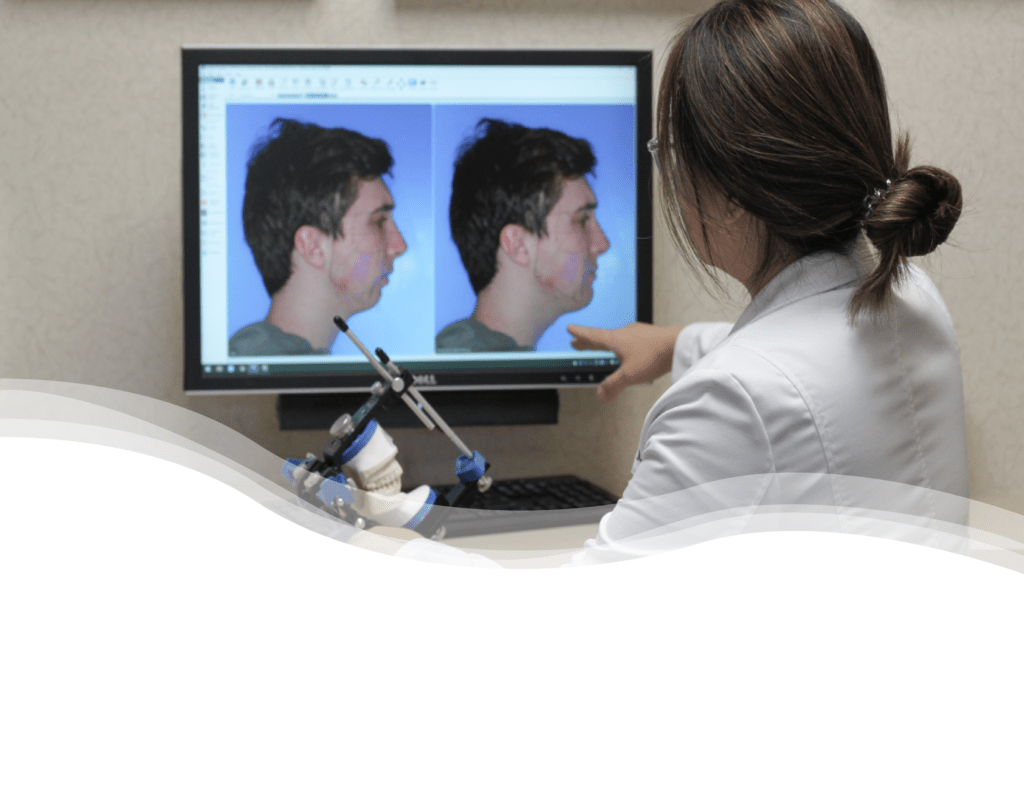 With relatively severe bite issues and misaligned jaw bones, Drs. Ikeda and Righellis may advise that traditional orthodontic treatment with tooth movement alone may not be enough to achieve an ideal outcome and may recommend jaw surgery.
With relatively severe bite issues and misaligned jaw bones, Drs. Ikeda and Righellis may advise that traditional orthodontic treatment with tooth movement alone may not be enough to achieve an ideal outcome and may recommend jaw surgery.
The growth and development of your upper and lower jaws can happen at different rates and to varying degrees. If one jaw is substantially smaller/larger than the other, it can result in functional inconsistencies, such as trouble when chewing, sleeping, talking, and breathing. Corrective jaw surgery performed in conjunction with orthodontic treatment addresses these skeletal irregularities and can immensely improve your quality of life. The best time for jaw surgery is once the facial bones have completely grown, which typically occurs in late teenage years in girls and not until early twenties in most boys. This is so that we are not working with a moving target.
With advancement in digital imaging technology, computerized jaw surgery treatment planning is very precise. Surgery usually can be performed inside your mouth leaving no visible scarring. Your skilled surgeon will make precise incisions in the jaw bone, and then guide and secure the bones to their ideal positions. As with any surgery, there is always some potential risk, but jaw surgery is generally a safe and predictable procedure when performed by an experienced surgeon. Most common risks associated with jaw surgery include blood loss, infection, and nerve injury. If jaw surgery is being recommended, then your orthodontist and surgeon have decided the benefits far outweigh the risks.
It is important to understand that jaw surgery is performed as an accompaniment to orthodontic treatment. Surgery will correct the alignment of the jaw bones, but it will not cause your teeth to shift into proper alignment. Dr. Ikeda and her team, as well as the oral surgery team will work closely together to ensure that your entire experience is comfortable.
TMJ Management/Growth
 The temporomandibular joints (TMJ) connect your lower jaw to your skull, and are located on both sides of the face. One of the most complex joints in the human body, your TMJ rotates and slides to allow your lower jaw to move every time you chew, speak, eat, swallow, yawn, and everything in between. If you begin to have trouble with your jaw and discomfort in the connecting muscles, you may be experiencing temporomandibular joint disorder (TMD).
The temporomandibular joints (TMJ) connect your lower jaw to your skull, and are located on both sides of the face. One of the most complex joints in the human body, your TMJ rotates and slides to allow your lower jaw to move every time you chew, speak, eat, swallow, yawn, and everything in between. If you begin to have trouble with your jaw and discomfort in the connecting muscles, you may be experiencing temporomandibular joint disorder (TMD).
While an injury to the joint itself or the lower jaw can lead to TMD, in most cases the exact cause is difficult to determine. Drs. Ikeda and Righellis will check for tenderness and pain around your jaw joints and will listen for symptoms when opening or closing your mouth. We will also check the motion of your jaw. We may order additional diagnostic imaging, such as 3D Cone-Beam CT or MRI to further evaluate the health and condition of your jaw joints before determining the best course of treatment.
Did you know that the TMJ is one of the major growth sites for your lower jaw? Studies have shown that trauma to the face/chin in growing children can negatively affect their jaw growth. This is because hard impact to the jaw joint can disturb the cartilage disc that plays an important role in jaw growth. If one joint is affected more than the other, the jaw growth will be asymmetric, affecting not only the bite but the facial symmetry. Dr. Ikeda has done extensive research in this area and understands the intricacy of the relationship between the health of the TMJ and jaw growth.
Jaw joint health is therefore important for patients of all ages, and the Hillside View Orthodontics team is happy to address your jaw joint concerns.
Airway Analysis
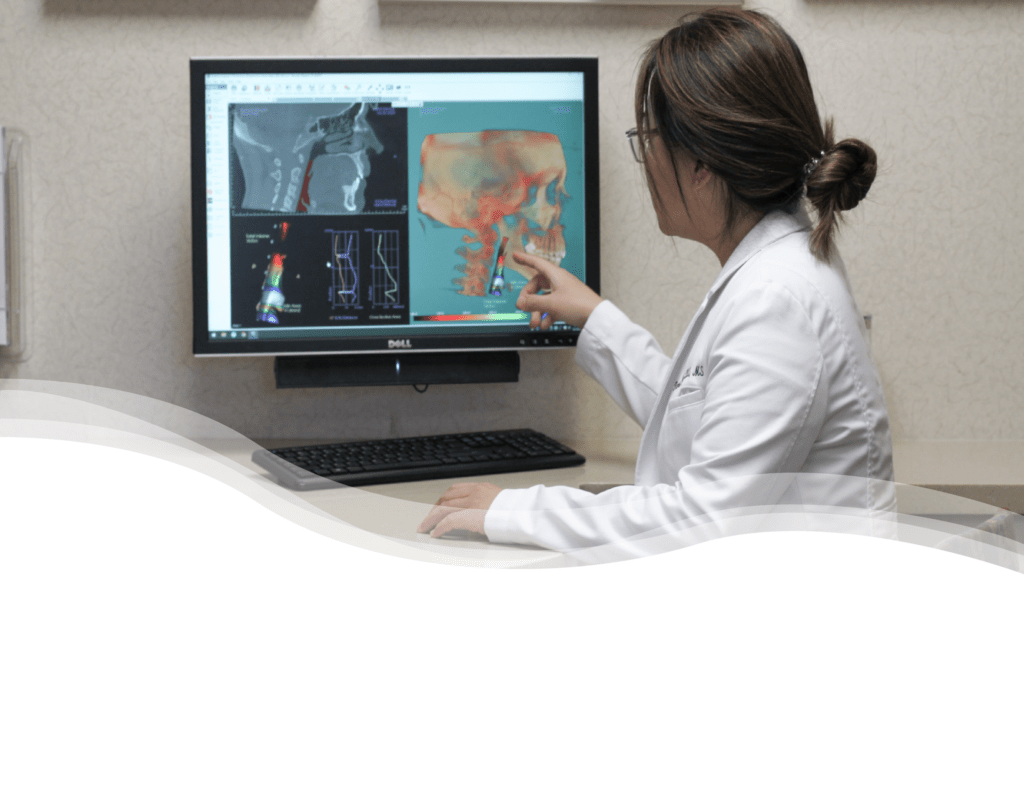 You may have heard of sleep apnea. It’s a condition where breathing repeatedly stops while you are asleep, which can be quite dangerous and have many associated health risks. The breathing disturbance is caused by the airway collapsing temporarily, which blocks airflow and therefore can reduce the body's supply of oxygen.
You may have heard of sleep apnea. It’s a condition where breathing repeatedly stops while you are asleep, which can be quite dangerous and have many associated health risks. The breathing disturbance is caused by the airway collapsing temporarily, which blocks airflow and therefore can reduce the body's supply of oxygen.
Does your child snore? Or is a chronic mouth-breather? Sleep disorders are unfortunately not something that only affects adult patients. While some children may “grow out of” their sleep-related breathing disorders, studies suggest that untreated sleep disorders can contribute to learning difficulty and behavior problems. It has been well-documented that abnormal breathing habits can also negatively affect your facial growth.
At Hillside View Orthodontics, we use diagnostic imaging including 3D Cone-Beam CT when indicated to evaluate your airway volume to help with early detection of airway obstruction. Drs. Ikeda and Righellis will review the images and discuss possible treatment options for you or your child.
Accelerated Treatment
 Do you want your orthodontic treatment done faster? We offer an FDA-approved appliance called OrthoPulse to achieve accelerated orthodontic movement. OrthoPulse uses low levels of light energy (near infrared light) to stimulate bone cells surrounding the roots of your teeth to facilitate tooth movement. It is safe and can be used with braces or clear aligners like Invisalign to reduce treatment time when used daily. Our patients also report reduced discomfort from orthodontic tooth movement when using OrthoPulse. If you are interested, ask us if you are a candidate!
Do you want your orthodontic treatment done faster? We offer an FDA-approved appliance called OrthoPulse to achieve accelerated orthodontic movement. OrthoPulse uses low levels of light energy (near infrared light) to stimulate bone cells surrounding the roots of your teeth to facilitate tooth movement. It is safe and can be used with braces or clear aligners like Invisalign to reduce treatment time when used daily. Our patients also report reduced discomfort from orthodontic tooth movement when using OrthoPulse. If you are interested, ask us if you are a candidate!
“Our family loves this office! My son feels that they are ‘careful, gentle, speedy and kind.’ I appreciate how organized and friendly their staff is. From our first visit, they have put my children at ease. I especially appreciate that they take the time to explain each step of the process to both me and my children. Their rewards cards are an extra bonus and motivator for my kids.”
“This office is one of the best I have experienced. I am truly amazed at the innovative ways they’ve come up with to incentivize the kids to be responsible in their oral hygiene. If you are anywhere close to the Bay Area, I would highly recommend this office (definitely worth a drive!).”
“What I observed and appreciated was that Dr. Ikeda and her staff took the time to analyze each of my sons’ jaws and teeth, kept them very comfortable and happy as they did, and they warmly explained TO THEM what they were seeing in a way that was easy for them to understand… After our initial meetings with Dr. Ikeda, I knew that we were in skilled and caring hands.”
“From my child: ‘I think this is a really good place because I like all the people who work there. When I ask questions they actually explain to me what is going on. I enjoy being there and I think it’s the best orthodontist for me!’ Great staff, very clean facilities. Everyone is helpful and answers all questions, which is very comforting for parents like me who are new to orthodontics. Highly recommend!”
“There is an art to creating the ‘perfect smile’ that is different for each patient. What works on one patient does not work on all, and they approach each patient as a unique individual and thoughtfully craft a treatment program designed to minimize discomfort. They do amazing work.”








